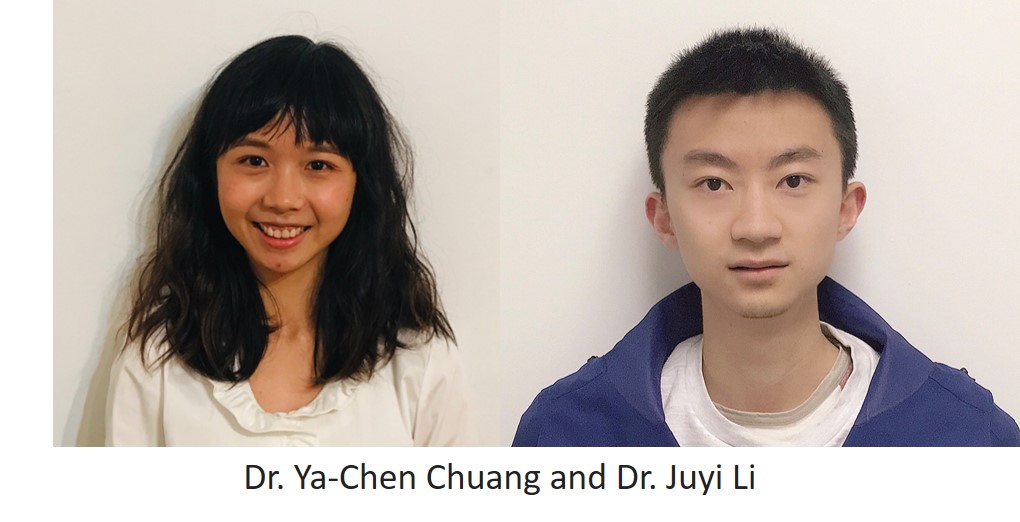Energetic scientists stay focused, with ace mentor’s help
 The cutting-edge tools and techniques distinguishing the Advanced Energy Research
and Technology Center (AERTC) are useful for more than advancing energy – when you
experiment on the cutting edge, there are always unexplored possibilities.
The cutting-edge tools and techniques distinguishing the Advanced Energy Research
and Technology Center (AERTC) are useful for more than advancing energy – when you
experiment on the cutting edge, there are always unexplored possibilities.
These can be difficult waters to navigate – disparate islands of ingenuity populated by next-generation thinkers, afloat on an ocean of futuristic sustainability and nanoscale-imaging technologies, all tossed by the dynamic storm of innovation.
Of course, the AERTC doesn’t lack for next-gen thinkers, willing to dive right into this technological tempest. And there are many steady hands on the Advanced Energy Center’s wheels, keeping it all from spinning out of control – particularly useful to researchers not strictly focused on new energy applications.
One such leader is Miriam Rafailovich and two such researchers are Juyi Li and Ya-Chen Chuang, a pair of postdocs who thickened their skins as Dr. Rafailovich’s apprentices.
Actually, the skin thickening is really picking up now that Dr. Li (November 2019) and Dr. Chuang (July 2020) have earned matching PhDs in materials science and chemical engineering.
A Taiwanese emigrant who earned his bachelor’s degree in chemistry at Nanjing University, Dr. Li focuses on artificial tissue engineering, particularly regarding the application of hydrogels. It’s all about colloidal gels (picture bananas floating in your Jell-O) and other crosslinked hydrophilic polymer chains – don’t worry, Dr. Li gets it, and that’s good news for the science of 3D bioprinting.
The scientist – whose research is promising for burn victims, pharmaceutical development and new drug-screening technologies – says he found a “really great role model” in Dr. Rafailovich.
“She’s the most hardworking person I’ve ever met.” Dr. Li notes. “Her passion and enthusiasm in science drive me forward. She is very resourceful and always encourages me and provides a lot of learning opportunities.”
Enjoying similar mentor-protégé benefits is Dr. Chuang, who also has skin in the game: The Chinese native, a postdoctoral fellow at the prestigious Stevens Institute of Technology who earned a master’s degree in chemical engineering from Taiwan’s National Cheng Kung University, aims to trigger dental pulp stem cell differentiation, a big step toward hard-tissue regeneration.
And she counts Dr. Rafailovich as a pillar of her PhD pursuit, noting the SBU-trained nuclear physicist (PhD, 1980) and renowned microscopy expert “has the patience to educate the young generation, from high school students to undergraduate to graduate students.”
And her mentor is also a damned fine scientist, Dr. Chuang adds.
“Dr. Rafailovich’s research has broadly impacted in many different fields because of her plentiful ideas,” the postdoc says. “As her PhD student, I have been inspired and trained to present my work, mentor, conduct research and experiment, and become an independent scientist.”
Three-dimensional bioprinted skin grafts and dental-pulp cell morphology are pretty far from the AERTC’s core energy-efficiency mission, but Thermomechanical and Imaging Nanoscale Characterization (ThINC) facility’s electron microscopes and other nanoscale-characterization technologies cater to scientists engaged in various pursuits – at least, the lucky ones, according to Dr. Li.
“AERTC is a great place for research,” he says. “It provides so many state-of-the-art facilities that we can take advantages of.
“Its cultural diversity helps different unique minds to communicate and collaborate.”
After three years of graduate-assistant work at the ThINC facility, Dr. Chuang also finds the hub “very resourceful and user-friendly,” and trumpets the benefits of broader scientific collaboration.
But ultimately, the postdoc credits ThINC’s biggest thinkers as its best benefit.
“Dr. Rafailovich and [Instrumentation Scientist Dr. Chung-Chueh Chang] are very professional and provide not only imaging services, but also suitable guidance and suggestions for imaging and materials characterization,” Dr. Chuang says. “I really enjoyed working there … I have learned a lot of techniques and earned plentiful experiences working with users in different fields.”
